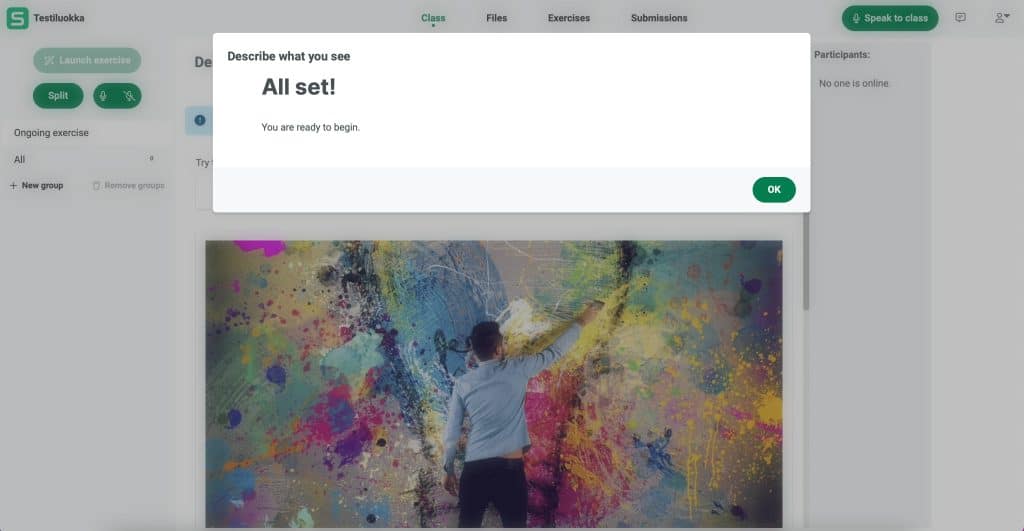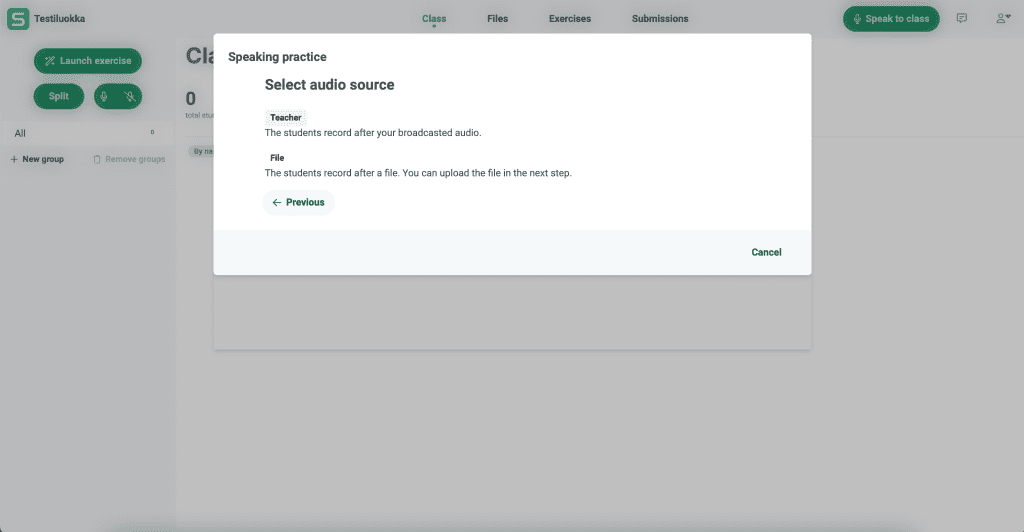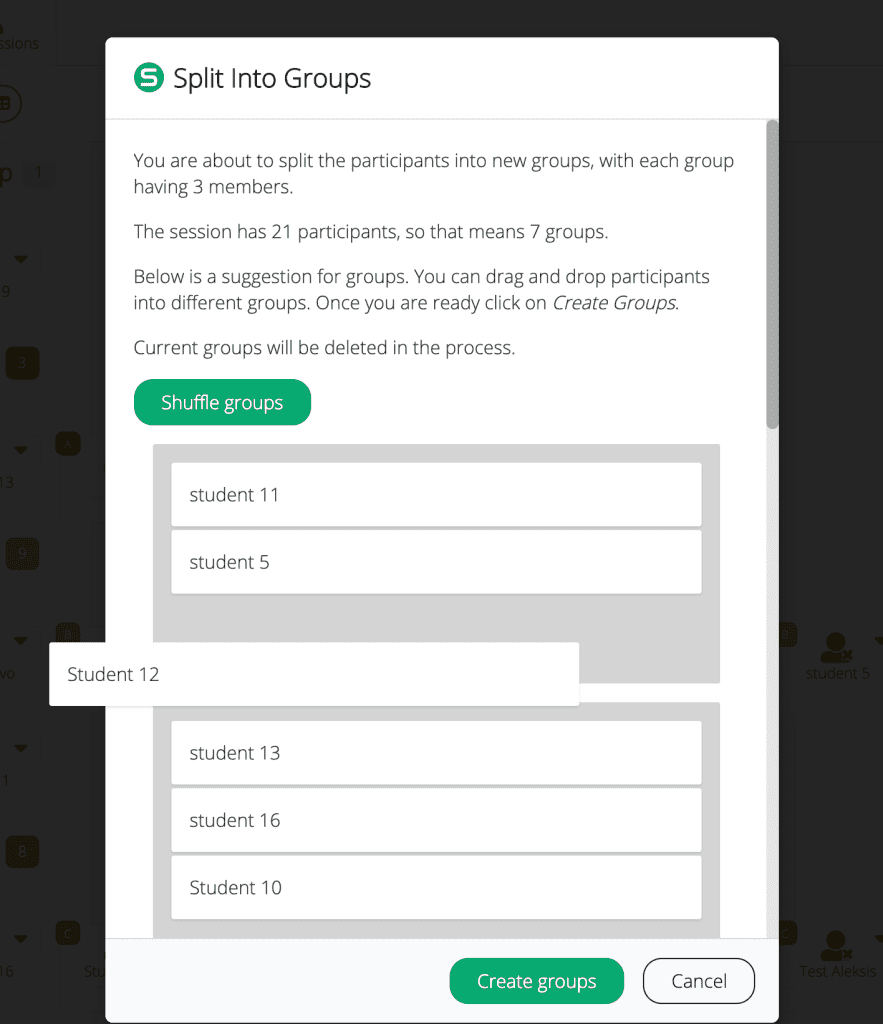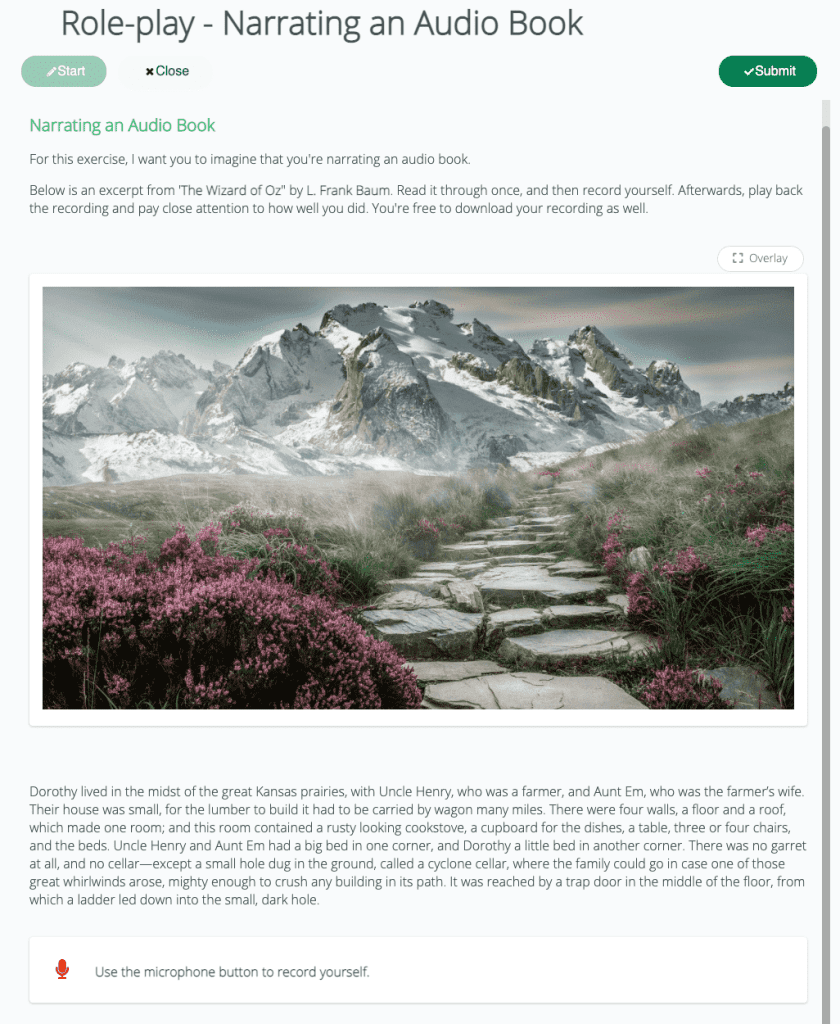When most students think about learning a new language, it’s the ability to speak coherently and fluently that defines their success. Whether that’s conducting a business negotiation in São Paulo, ordering a coffee in Turin or booking theatre tickets in London, the ability to hold your own in a conversation with a native speaker is the main ambition for most learners. In order to achieve this, students need to develop their spontaneous speaking skills so that they have the confidence and competence to fully participate in such unscripted situations.
In an earlier blog post, we defined what the term “spontaneous speaking skills” means and highlighted the importance of such skills for language learners. So this post is deliberately written to be more practical and provides four example activities that language educators of all languages can easily deliver to build their students’ spontaneous speaking skills.
Off and online solutions for speaking practice
In order to make these speaking activities as universal as possible for educators globally, we have identified exercises that can be delivered either on a digital language teaching platform such as Sanako Connect or with a classroom-based language lab solution (such as Sanako Study). Both products have been specifically designed to increase the time that students spend speaking and actively learning during classes. As such they’re perfect for building spontaneous speaking skills whether students are working face-to-face or remotely.
How to prepare speaking activities?
The first thing to consider when preparing any spontaneous speaking exercise is that it is vital to ensure that the target language should always be used whenever possible. It is important that educators are consistent and rigorous in reinforcing this expectation, otherwise students will take the opportunity to lapse into their native language.
All of the below activities have two key elements – production and review. Of course, encouraging creative language production is at the heart of building spontaneous speaking skills. But it is also vitally important that students are given time to reflect and review their recorded speech (and that of their peers) and to critically evaluate where improvements can be made.
Of course, do also take the time to tailor these activities to the language abilities of each student. All of them can be tailored to be as easy or as challenging as students need. Importantly, Sanako Connect makes it easy for educators to distribute specific resources to students and can also allocate students into conversation pairs or groups.
Activity 1 – Image description
This is an easy and straightforward activity to get things started and to build learners’ confidence. All you need is at least one good-quality image – it could be one that you’ve found to illustrate a theme or one that a student has provided. Of course, multiple images could be used to test particular skills or vocabulary.
Using Sanako Connect, the image can be shared with all students, who then record themselves responding to questions / stimulus that you’ve provided. As above, students play back and review their responses and you can store them in Connect for review at a later stage. It is clearly advisable that a wide range of image types and subjects are shown to students, so that they are unable to predict what might come next.
This activity allows students at all skill levels to participate. Beginners can simply describe what they see (e.g. a red house, a field of yellow flowers) whereas stronger learners could be asked to describe how the picture makes them feel or what point they think the artist / photographer is trying to convey.
Activity 2 – Listen & Repeat
These exercises are great ways to introduce different speaking and intonation patterns to your students. As the name suggests, they rely on imitation which is the way we learn almost everything.
For this exercise, the educator simply needs to create some audio content themselves or use an existing video/audio clip. Students listen to that content and then record themselves trying to reproduce it as accurately as possible. Using Connect the recording can either be done in advance and then shared with students, or it can be done live. All you need is a list of words or sentences that are relevant to the lesson on hand.
Perhaps the most crucial part of the lesson is to give students the chance to listen to and review their own imitation. After all students have recorded their responses, the educator can use Connect to play back the files to each individual student simultaneously. Or the student can access their own recordings to listen to at their own pace and in their own time. They’ve already developed some important muscle memory in forming the key words and phrases in the target language – now it’s time to review their own speech against the original audio to see what they can do even better next time.
Activity 3 – Pair and group discussion
Placing students at the heart of the learning process is the key to success with this activity.
Your students and their speaking skills take the spotlight – your role is to listen in and monitor the ongoing conversations and to offer feedback as you circulate through the class (or the virtual language classroom!).
The pairs or groups can be chosen by yourself or at random. And begin by giving all students detailed guidance and instruction to ensure that they know what they’re doing. They’ll certainly need a prompt for a conversation or a piece of information / text that they have to read through and then discuss. The activities could even be combined so that the session begins with a listening exercise (e.g a short story) which is then followed by a discussion about what they have heard. “What was your favourite part of the story?” is a great way to get the ball rolling.
Try to encourage students to focus on building their fluency of communication rather than getting every single word correct. Ensure that everyone is using the target language and on staying on task, but do get involved if a group seems to be struggling and isn’t making the right level of progress.
Activity 4 – Role play
Role plays can be a really fun and engaging way to bring the target language to life and to put your students into real-life scenarios. They can easily form part of a pair discussion, as above, where you assign different roles to the students and let them take turns to be, for example, a tourist guide, a waiter, a doctor etc.
But the activity can also be run as an individual activity, where each student plays the role of an audiobook narrator, a sports broadcaster, a YouTube celebrity or a webinar host. They then work through a series of exercises that are provided by the teacher to address different topics and types of content. All of this can be recorded via Connect so that students get the chance to listen to themselves acting the role and quite possibly surprising themselves with the quality of their language skills!
How can Sanako Connect help develop spontaneous speaking skills?
Sanako Connect is a powerful browser-based language teaching software that helps educators to improve students’ speaking skills. It enables teachers to:
- Create engaging speaking exercises using a wide variety of media including your own voice, sound files, podcasts, presentations, videos, and other digital content.
- Assign exercises for students to demonstrate their fluency. Connect offers an easy way to create exercises for listen & repeat and the other activities detailed above.
- Easily divide students into pairs or small groups for speaking practice. Or enable individual students to do the work they need to do in a focused environment.
- Give students access to the exercise/resources from any location with internet access, at any time and using any device, including laptops, Chromebooks, tablets or smartphones.
- Provide detailed feedback via Connect’s feedback functionality. Students can immediately see where improvements need to be made. They can then relisten to the original audio material and record additional attempts.
If you’d like to find out more about how Sanako Connect could help to transform your students’ spontaneous speaking skills, please contact us now to arrange your FREE demo!





